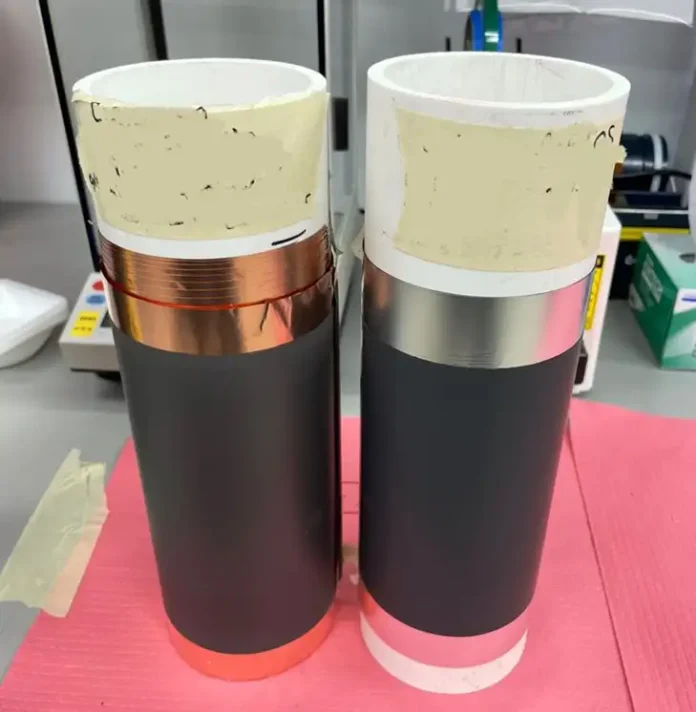By Liz Stevens, writer, UV+EB Technology
Ateios Systems is a company in Newberry, Indiana, and a RadTech RadLaunch Class of 2022 awardee. UV+EB Technology spoke with Ateios Systems’ Chief Executive Officer Dr. Rajan Kumar about the start-up’s quest to take new developments in battery component manufacture beyond the laboratory and into the commercial mainstream.
Kumar explained that batteries, over 95% of which are produced overseas, have become critical components for the myriad devices bought by American consumers, even as the nation and the world experience increasing supply chain disruptions. “Anything with a button has a battery – our phones, our cars, all of the electronics around us,” Kumar said. “If we cannot manufacture batteries domestically, we lose a lot of control and capability for the future of technology and even everyday life.” Kumar cited the example of overseas semiconductor production and the impetus for its recent resurgence in the US. “We recognized that the microchip is a critical component; there is a microchip in everything. A shortage of them due to the COVID-19-related supply chain disruption put automakers like Ford and GM in a huge bind; they could not get their cars off the lot because there were not enough chips available. Now US-based microship production is increasing dramatically.”
In addition to seeing the growing market demand for batteries, the leadership at Ateios Systems found that the standard process for manufacturing batteries has remained the same for the past 50 years. The current process relies on the use and re-collection of toxic liquids, which renders the process to be slow, expensive and destructive to soft materials. Ateios Systems identified that many of the existing battery limitatons in performance and form-factor could be attributed to the outdated manufacturing process.

Using a combination of composite materials and electron-beam-emitting technology, Ateios is developing a new battery manufacturing process that is solventless and non-toxic, and that offers versatility in battery design for optimizing performance. By building on groundbreaking work by scientists and researchers at the US Department of Energy’s Oak Ridge National Laboratory (ORNL), Ateios is developing a new generation of batteries for wearables and the internet of things. The company’s manufacturing methods are said to deliver battery components much faster than conventional manufacture, with a set-up that is smaller, cleaner and less expensive than present-day mainstream production. The company’s software allows for product customization and versatile production control.
Chocolate syrup and two-story-tall machines
Conventional production for batteries used in devices involves hulking machinery and a mix of chemicals. “The way batteries are made today,” explained Kumar, “is that we take materials that are electrochemical – they convert electrons into ions and vice versa – and pulverize them into nano- and micron-sized powder.” The goal is to convert a composite of these powders into a robust and carefully designed, uniform film with micron precision. The key to creating this film is an electrochemically inert binder or polymer to keep all the particles together. “In order to properly mix and coat the powders onto a metal film with precision,” said Kumar, “a solvent or liquid – often toxic and with a high boiling point – is added to dissolve the polymer to form a viscous solution. This is what battery engineers call a slurry or what people familiar with 3D printing might call a resin with particulates. The composite glob, which has the same consistency and appearance as chocolate syrup, is coated onto metal foil.”
Once the foil is coated, all of the solvents then must be removed, leaving just a film containing the composite powder and binder. “This is done by using long thermal ovens to physically remove the solvent from the coated foil, which hopefully then is handled properly to avoid damage to the environment,” said Kumar. “Once the film is made, it is processed and diecut, and then assembled with other electrodes or components into the batteries that go into 90% of our devices. The process of using solvents and drying ovens is slow and expensive.”
A conventional manufacturer of lithium-ion battery electrode production systems – which look to be the size of several railway locomotives lined up end to end and stacked several layers high – describes the production line thus: “for raw material handling, slurry mixing and fluid delivery, web handling, coating and drying, lithium-ion electrode solvent recovery and purification, calendering and slitting.” Kumar noted that these massive machines, with air scrubbers atop them, often require a larger environment. “For lithium-ion battery production,” Kumar said, “a manufacturer might need to operate in a dry room, which is a very isolated, controlled room. So, in addition to having a really big tool to start with, a manufacturer might have to build an even larger room around the machinery to support it.”
No solvents and instant cure
Ateios is commericializing a new class of composites and a new process to dry them to manufacture the key battery components faster, cheaper, cleaner and with a better design. “We are innovating how batteries are manufactured, and our process is intentionally chemistry-independent,” said Kumar. “It has the potential to build any type of battery, from lithium-ion to zinc batteries, and even next-generation sodium-ion and solid-state batteries.”
The chemistry for creating solventless electrode film stems from ORNL’s work to identify a chemistry that could be dried and cured via electron beam rather than thermal heating. “We secured an exclusive license on the ORNL materials and processes,” said Kumar, “We are making improvements to and have filed additional patents for the materials, process and analytics to make them scalable for manufacturing and improve battery performance. ORNL was able to prove the concept in a lab setting, and we are trying to scale it into full production capability.”
Ateios is focused on developing a high energy density battery with more energy density than comparable conventional batteries. “We also can add more zing, like conformability or surface mounting, to our product,” Kumar said, “but right now, we have a battery that has two to four times more energy. We are focusing on leveraging the technology to build a better battery with more energy. We then can leverage it to build more interesting applications, like conformal batteries. In the long term, we want to scale the technology to drones and power tools, and then eventually scale it to grid storage and electric vehicles.”
To reach its goal of producing a battery with greater energy density, Ateios first identified a chemistry that had been known to have very high energy density, but that did not have the power needed for electronics that rely on some form of wireless communication. “We were able to make an innovation in our formula with novel composites and with the coating of our materials to get the power deficiency resolved,” Kumar explained. “Now the battery not only has higher energy, but it is on par with the power capabilities of existing chemistries, an aspect that is critical for wireless communications.”
The company’s implementation of electron beam technology and compatible materials for curing can be controlled via Ateios’s proprietary software front end. “The exciting part about this,” said Kumar, “is that the amount of cure is based on the density of the film material being used for batteries – its physical thickness.” The material thickness dictates the conditions needed for optimal curing. To cure thick electrodes, for example, the electrons need to be emitted at very high voltage to help drive the electrons further into the film to cure it; to cure thin films, less voltage is required. “It is a delicate balancing act,” Kumar noted, “We don’t want to overcure the material, but we also don’t want to under-cure it. We are building robust software that not only takes all of the inputs to build the battery but that then details the optimal curing-dosage specs.” Kumar described this as a system in which batteries can be designed specifically for an application, using software that also can control the production during a manufacturing process that is non-toxic, fast and economical.
The company is located in a $15 million battery pilot facility in Indiana, an incubator space with resources for a company like Ateios. “We have access to the entire range of battery production equipment,” said Kumar. “This includes a solvent-based electrode line, so we can go head-to-head, apples-to-apples, in terms of performance, cost, logistics and capabilities to really understand what our technology can and cannot do.”
Kumar described the company’s next steps as establishing a small customer base, beginning fundraising and starting construction on a factory – all while also working on a new rechargeable battery product. Kumar has been accepted as a fellow to Oak Ridge National Laboratory’s Innovation Crossroads program, during which he will have the opportunity to work closely with ONRL to commercialize the Ateios technology.






